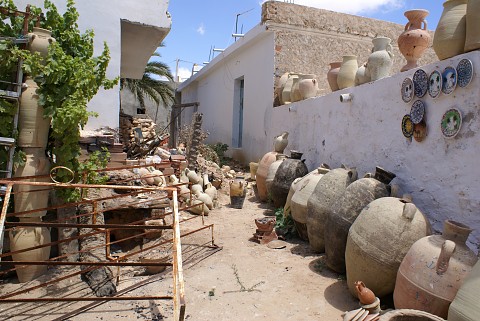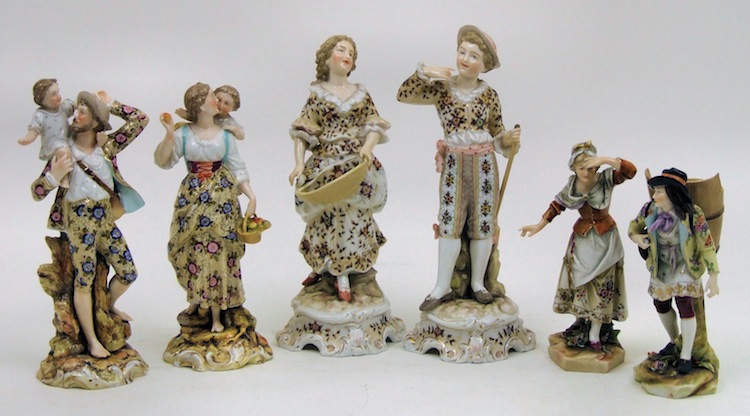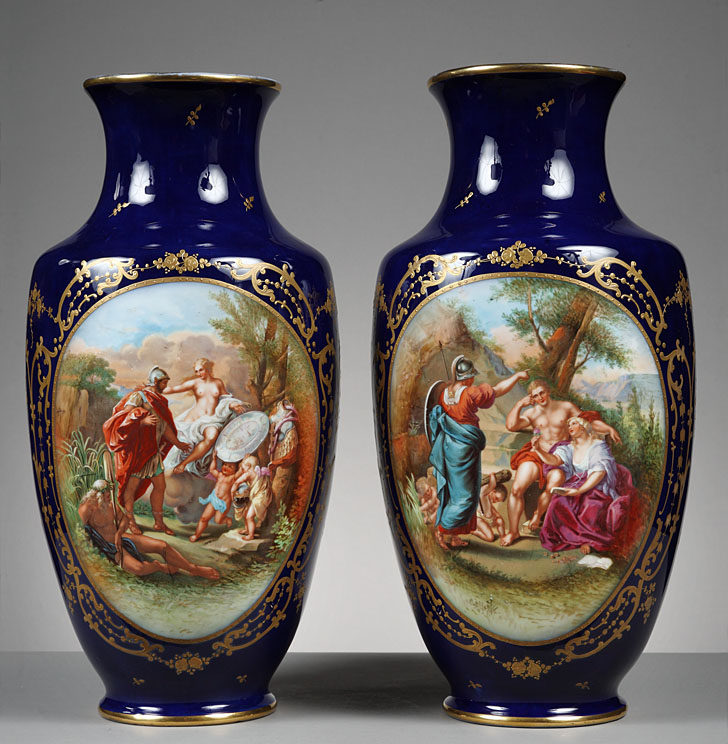The pottery remnants of the ancient ages have provided ample knowledge to archaeologists, thusly contributing toward dating and locating the exact order of some historical events. Literature has, time and again, looked to pottery works and other related molded arts for assistance in determining timelines.
British Pottery
Richard Abbey, an engraver and printer in Liverpool, was among the earlier potters. His signatures can be found on the pottery around 1773 to 1780. William Absolon was a decorator of earthenware at Yarmouth, Norfolk. His signatures, too, appear on pottery pieces around the 1784-1815 time period. William Baddeley was a manufacturer of earthenware and followed the Wedgwood style in Eastwood, Hanley.
In the 19th century, Harvey Adams, of Harvey Adams and Co., and later, the Hammersley and Co., Longton (1887 – 1932) were involved with pottery in a big way.
Henry Alcock, through his company, Henry Alcock and Co., Cobridge, was active in the business of pottery around the period 1861 – 1910.
Early History
Pottery bridges the gap between nature and art and is the combined reflection of the two. Being the oldest and one of the most well known art forms, it has gained acceptance in every corner of the world since ancient ages. Not only has it served as a means of decoration in the form of decorative earthenware but also has been utilized in the form of useful bowls, pitchers, plates and other utensils.
Many advanced countries around the globe have great, timeless treasures of this age-old art form and have been inculcating it to have a sneak preview in the lifestyles of the primitive cultures and prehistoric periods.
Pottery of ancient Mediterranean
The glazes were commonly used by the masses as early as 1500 B.C. It is worth mentioning the early Aegean pottery prevailing in Minoan and Mycenaean periods. Babylon is home to such ceramic arts, where glazed and colorfully painted bricks were common. Beautifully decorated, symmetrical figures were crafted with dazzling shades of red, black, and various other colors. The combination usually was of red ware with black figures or a black background with red figures. These are mostly seen on the man of the water, oil, and wine jars. A common form of red ware is Arretine or Samian in the Greek Roman era.
Pottery of Asia
Chinese civilization has its own contribution in the porcelain and porcelaneous art ware. Chinese work was exported in the neighboring countries of Korea and Japan, followed by many Islamic nations. However, no technical knowledge was shared, whatsoever, to enhance this craft among these other nations.
In order to give an over glazed effect, lusterware was used first in the Islamic pottery art, with its center in Baghdad, around the 10th century. A further way for the development of lusterware was paved by Fatimites in Egypt from the period of 969 to 1171 A.D. The Chinese influence started spreading in this region due to
the Mongol domination of Persia. The Blue Mosque located in Tabriz is a perfect example of ceramic tiles being used in this era.
Pottery of Europe
Except for the German craft, there was little development in pottery forms and earthenware in Europe. With origins in Italy, Majolica spread to the nearby countries of France and Holland. Before Porcelain could make its full-fledged mark in Europe, Majolica and stoneware were two of the most prevailing pottery forms.
Pottery of Americas
Clay based pottery and decorated bricks and tiles gained popularity with the newly formed Dutch settlers. That is when terra cotta art forms began production in Massachusetts. With the advancement of refugees in different American states, the pottery craft flourished. Shenandoah pottery was formed by such groups as the Palatinate refugees. Fine China was made in America for the first time in 1769, opening gates for stoneware jugs and eggshell China. The country became a major producer of yellow ware, red ware, and ironstone in the process. Significant steps were taken to popularize the pottery art form through the World’s Columbian Exposition in 1893 as well as the Centennial Exposition in 1876.
Modern Pottery
With the development of the American pottery styles in the earlier part of the 20th century, the artisans had great opportunities to demonstrate their creativity.Some of the major art works that flourished in this era were art nouveau and art deco. Picasso, Matisse, and Miro gained popularity and so did the mass production techniques on synthetic materials. Cincinnati Art Pottery and Rookwood Pottery employed a large number of people who worked as artisans and demonstrated their handicraft skills. Native American people adopted the primitive styles and production of utilitarian potteries increased. Ironically, the demand for handcraft ware did not decrease and remains in demand today.




















